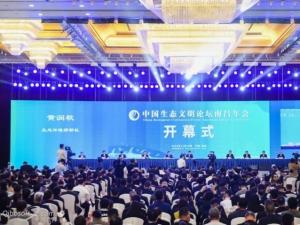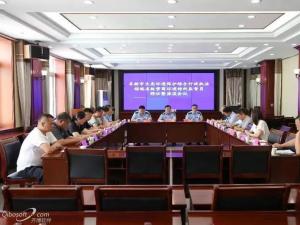Manuel PENNAFORTE (潘富石):法国预防科技灾害的法律措施∗(二)
|
AROISSE, a subsidiary of the company ATOFINA, itself a subsidiary of the group TOTAL, the leading French oil company. It is located about 5 kilometres south of the centre of Toulouse. Initially built outside the town at the beginning of the twentieth century, it has been progressively encroached upon by housing, the local authorities having given the necessary building permits. On the day of the catastrophe, the factory employed just fewer than 500 people on a piece of land measuring about 70 hectares. Its main production was ammonium nitrate for agricultural purposes (fertiliser) and to a lesser extent industrial ammonium nitrate (a product used in the manufacture of explosives used notably in quarries). The factory also made several other products such as melamine, resins and chlorine products used to disinfect swimming pools. Several days after the catastrophe, the public prosecutor charged with the criminal investigations declared he considered there to be a “90% chance of it being an accident”. This declaration was made in an attempt to calm the hysteria which followed the catastrophe, coming just ten days after the terrorist attacks of September 11th, 2001. Since then there have been more inquiries, many explanations have been sought, the victims have been indemnified (the company GRANDE PAROISSE has paid out more than two billion euros) and the trial has just finished, awaiting the final judgment. One thing is certain after these eleven years of procedure: contrary to the hasty conclusions of the public prosecutor it has not been possible to establish that the origins of the catastrophe were accidental. This catastrophe has led to a wide debate in the public opinion due to the scale of human and material loss and the emotion it has engendered. The French authorities immediately put in motion extensive legislative reform which changed existing laws significantly. Adopted by French law n°2003-699 of 30 July 2003 pertaining to the prevention of technological and natural risks and the repair of damage, the reform undertaken by the French parliament retains the essence of the principles initially assigned to the texts in implementation of law n°76-663 of 19 July 1976 relative to the classified installations for the protection of the environment. For more than thirty years, the French authorities have been working to reinforce the legal tools necessary for the prevention of the risk of major accidents. It was no coincidence therefore that the afore-mentioned law, law n°76-663 of 19 July 1976 relative to the classified installations for the 662 可持续发展·环境保护·防灾减灾 protection of the environment, was passed nine days after the Seveso catastrophe which occurred on 10 July 1976 in Italy, near the municipality of Seveso. One year later, the implementation decree of law n°76-663 of 19 July 1976 introduced the obligation for the operator of an installation presenting a relatively high risk to include a “danger study” in the application for authorisation, an essential tool in the analysis of major accident risks. France was then actively involved in the reflection which six years later led to the publication of the European Directive n°82/501/CEE of 24 June 1982 concerning the risk of major accidents in certain industrial activities, referred to as the “Seveso Directive”. The founding principles of the prevention of major accident risks are defined by the “Seveso Directive”. The regulation in force at the time of this article’s publication follows on from it directly. In the aftermath of the Bhopal catastrophe and other technological accidents which occurred worldwide since the “Seveso Directive” came into force, the European Union adopted Council Directive n°96/82/CE of 9 December 1996 on the control of the risk of major accidents involving dangerous substances, referred to as the “Seveso 2 Directive”. The “Seveso 2” Directive repeals the “Seveso Directive”, but nevertheless retains the guiding principles while adding essential complementary elements. The approach to risks has become more global and detailed: the operator whose industrial activity involves a high technological risk must from now on consider the “installation” as part of an “establishment”, (“high threshold” or “low threshold”). The operator must also establish a policy of major accident prevention (PPAM) and put into place a system of safety management (SGS). As a direct result of the review process carried out following the “AZF catastrophe”, the French law n°2003-699 of 30 July 2003 (mentioned above) completes the existing legal framework introduced by the two “Seveso” Directives. French law is now based on the precise identification of installations which are likely to generate a risk of a major accident (1). It also provides for a series of specific instruments destined to reduce the probability of technological catastrophes occurring (2). 1 The Identification of Installations Likely to Generate a Risk of Major Accidents According to the French Environmental Code, the installations likely to generate a risk of a . major accident . are those which present “serious risks to the health or safety of neighbouring populations and to the environment through the danger of explosion or the emanation of noxious products” (C. env., art. L.515-8, I). It is the Prime Minister’s responsibility to specify the list of installations concerned which are listed under the letter “S” – the initial of the word “servitude” – in the list of classified installations. However, the fact, for a given installation, that it is not di |
我来说两句
已有0评论 点击全部查看






